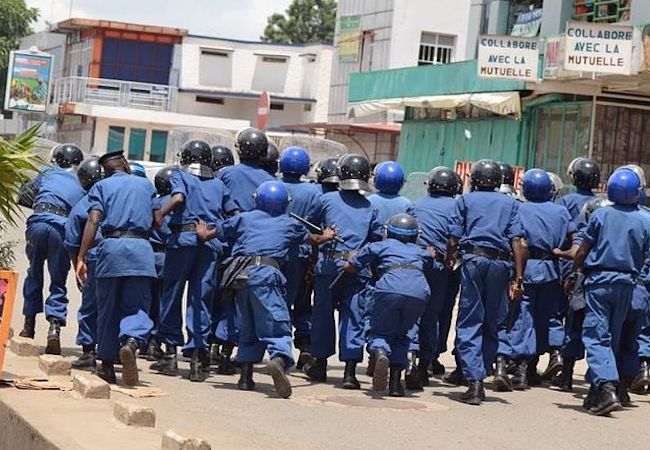Failed institutions in Burundi

By Jetnor Kasmi
Exclusive and oppressive regimes are not only inefficient, but they can also lead to massive loss of human lives. Murdering by one’sstate is one of the most devastating illustrations of the failures of governmental institutions. Institutional failure is one of the reasons that has overwhelmed many nations over the past decades. The failure of political systems comes as a result of the ignorance of the leaders who use their time to accumulate power and wealth through the monopolizationof resources. Burundi is one of the nations whose governmental characteristics match the descriptions of a rooting state with failed institutions and crooked leaders (Ndikumana 2000).
Displacement and violations of human rights havebeen an ongoing issue in Burundi for decades. The sparks that lead to insurgency were the 1972 mass killings of Hutus by the Tutsi dominated army and the retaliation of Tutsi in 1993 with the mass killing of Hutus. The violent conflicts between two minorities and their perspective armies caused the displacement of thousands of individuals. Many of the initially displaced have no intention to move out of their settlements because of the classist conflicts. The 1993 civil war brought forth selective murdering, for instance,the probability of an individual being killed during the civil war events is significantly affected by age, sex and wealth. Therefore, older, wealthier and male persons were more likely to be killed. People who invested more in the humancapital of their children had a higher risk of being killed ( Bundervoet 2009).
There are two major ethnicities living in Burundi, one of the ethnicities areknown as Tutsi and the other group is Hutu. Unlike other ethnic conflicts, the one in Burundi is somewhat different. The main cause of conflict and insurgency is not religion, culture, or language. They both speak Bantu and French and furthermore, both these ethnicities practice Christianity. One could argue that the main reason that brought forth insurgency is the class difference. The dominant tribe in Burundi were the Hutus, the Tutsi arrived in Burundi during the 15thcentury and took control of the society. Today Burundi resembles a torn apart country occupied by Hutu and Tutsi tribes, divided into territories which have turnedinto isolated areas, closed to the outside world. Most Tutsi believe that the only way for them to be safe is to live in areas where security is provided to them by the military. On the other hand, the Hutu are often found in the hills and villages of the country living in a self-sustained economy (Laely 1997).
One of the cases of ethnic violence in Burundi happened as a result of the institutional failure. Furthermore, the privatization of key institutions such as the military, the judiciary and the education system by the ethnic group in control, has resulted inthe divisionbetween the state institutions and the mass population. The failed institutions and leaders resulted to violence in order to repress the rest of the population and hold on power and resources while the oppressed categories of the populationclaimed their fair share in natural resources (Ndikumana 1998).
Tutsi, being the minority population in Burundi, began to use their political power, through institutions such as the military to commit violence, murder, and lead to a large number of casualties and displacement. It was estimated that 80% of 5.5 million of the population of Burundi is Hutu, then again the 20% of the population, the Tutsis organized and held a monopolyon politics, raw materials, andeducation, thus controlling the entire nation (Deng 1998).Since the independence from the Belgium Congo, the cattle and land ownership was one of the most profitable business. Tutsis were cattle keepers and land ownersand tribal chiefs, moreover, ethnicity was recognized by the living status rather than their actual heritage. If one was a cattle herder one was automatically assumed to be a Tutsi; socially a wealthy person could be Tutsi even though he might have a Hutu nationality (Deng 1998).
Up until 1993, there was no conflict nor any political unrest between the two dominant ethnic groups in Burundi. Grievances of the past and the socio-economic issues prevented the kingdom of Burundi from achieving peace. The chaos and the massacres that resulted as a result of a coup d’état organized by the elements of Tutsi dominated military, resulted in the increasing of the segregation of different ethnic groups in Burundi. One other factor that played a major role in the segregation of the ethnic groups was the role that postcolonialismplayed. The European views onthe classification and interpretation towards racial and ethnic differences enlarged the potential of the conflict between Tutsis and Hutus (Laely 1997). Belgians preferred to interact with Tutus over Hutus because of what it was perceived as a higher status in the Kingdom of Burundi. The Belgian colonizers removed many of the Hutu chiefs and replaced them with the better educated Tutsis. One might conclude that the segregation instilled by the colonizers brought forth acceleration of tensions between ethnic groups.
A high degree of popular participation in mass murder in Burundi can somewhat be explained by the shortage of land which is one of the most important production factors in Burundi. As a result of the shortages, the poor land-hungry farmers had a high tendency to engage in killings which would ensure them benefits on territorial gains once their group won the coup (Bundervoet 2009). Furthermore, the failure of the parliament to resolve its own contradictions was one other example of the failures of the institutions to stop the conflict.
Burundi became a victimof unsolved ethnic, cultural and political grievances, which resulted inslaughtering and internal displacements. The conflict that occurred between two major ethnic groups continued for more than five decades. People live around the country as migrants running away from the fear of the terrifying blood splitting ethnic cleansing. Causes of conflicts were amplified as a result of colonialism and post-colonialism. If the institutions would not have failed and if both ethnic groups had negotiated and used their similarities rather their differences to unite the country, thus building stable uncorrupt government structures, the terrible history of human violence and the violation of countless of human rights, might have been prevented.
Bibliography:
- BUNDERVOET, TOM. «Livestock, Land and Political Power: The 1993 Killings in Burundi .» Journal of Peace Research, May de 2009 : 357-376 .
- Deng, Roberta Cohen, and Editors Francis M. The Forsaken People: Case Studies of the Internally Displaced.Brookings Institution Press , 1998.
- Laely, Thomas. «Peasants, Local Communities, and Central Power in Burundi .» The Journal of Modern African Studie, December de 1997: 695-716.
- Ndikumana, Léonce. «Institutional Failure and Ethnic Conflicts in Burundi .» African Studies Review, April de 1998: 29-47.
- “Towards a Solution to Violence in Burundi: A Case for Political and Economic Liberalization.” The Journal of Modern African Studies, September de 2000: 431-559.




